Denon PMA-50 Review
Denon PMA-50
A stereo amp for the modern world
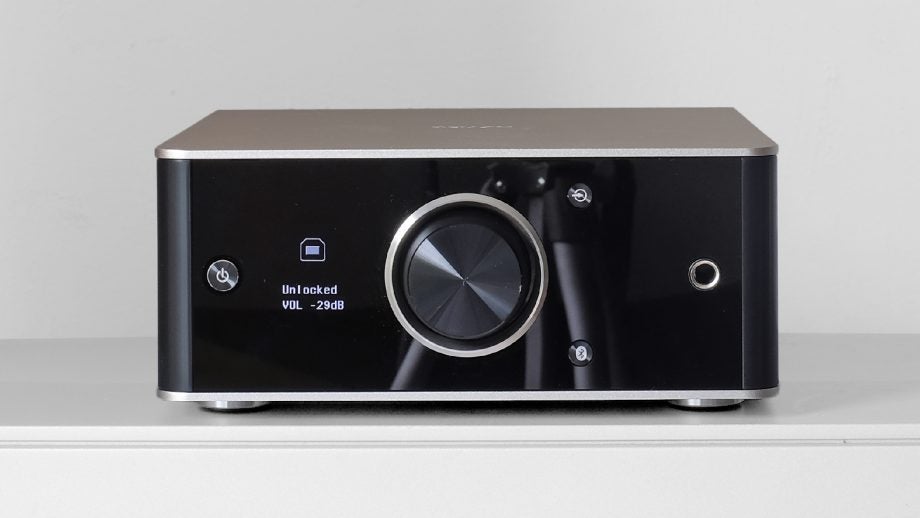
Verdict
Pros
- Small and slick-looking
- Has Bluetooth
- Good USB audio capabilities
Cons
- Somewhat limited amplifier power
- Feel not as premium as look in places
Key Specifications
- Review Price: £319.00
- 50W power (at 4 ohms)
- Bluetooth with aptX
- Phono input
- 2 x optical inputs
- Coaxial input
- Headphone output
What is the Denon PMA-50?
The Denon PMA-50 is a small, elegant stereo amplifier that has just enough extra tech packed in to avoid it looking like a relic from the past.
A USB input and Bluetooth are the most important. You pay a little for style here, but it’s a sensible alternative to an all-in-one speaker if you’d rather use hi-fi bookshelf speakers.
These speakers aren’t included, but since the main unit costs £319 you could buy a Denon PMA-50 and a decent pair of entry-level units for the same price as a Sonos Play:5.
Related: Best Home Audio Product 2016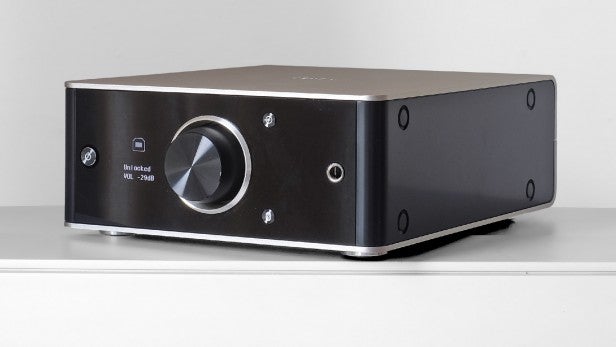
Denon PMA-50 – Design
The Denon PMA-50 aims for the sort of grown-up modern hi-fi-style you might see in the show rooms of a furniture shop. It’s small, at around half the depth and width of traditional hi-fi units that have all but died out.
Denon has taken an even more style-led approach than seen in with the Ceol systems – the range of modern mini-units that Denon sold before now.
The shell of the Denon PMA-50 is based around a curvy exoskeleton of roughly 2mm-thick aluminium. This is the aesthetic highlight, with a light-gold anodised finish that isn’t too different from what you see in an iPhone.
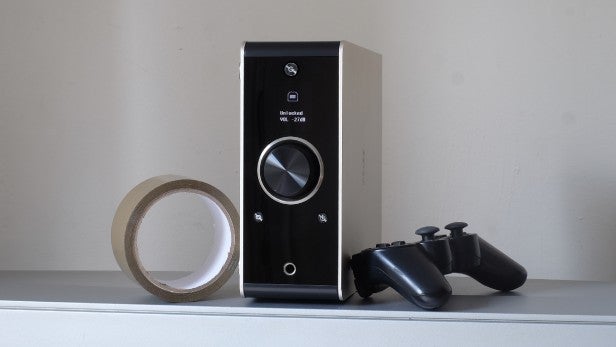
Get up close with the rest of the Denon PMA-50 and you see that the design is otherwise not that dramatic. The visual impact is strong given the effort involved. Its sides are textured plastic and the front is shiny plastic that could easily pass for glass.
The one slight disappointment with the build, however, is the volume knob, which isn’t quite as smooth and luxurious-feeling as you might expect. Whether this is important enough to affect your buying decision is a matter of personal opinion.
The Denon PMA-50 can sit on its side, or upright to take up even less space. Typical of Denon’s attention to visuals, the little display automatically flips over to suit.
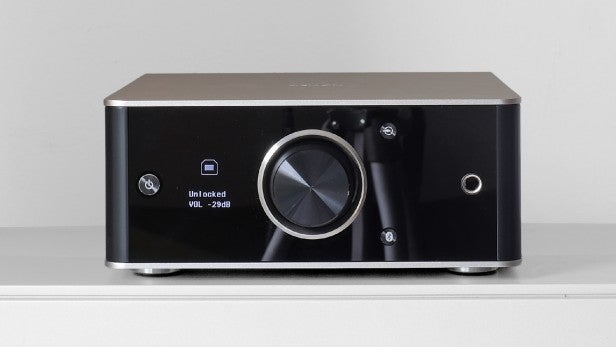
Denon has used exactly the right kind of screen here too. It isn’t a colour LCD that will display album art, but a very basic white OLED panel that sinks almost perfectly into the glossy black surround.
There are only three buttons to the Denon PMA-50: power, Bluetooth and an input selector. Other software features are accessed using the remote, but the menu system is very simple indeed. You can alter the balance and the bass/treble levels – and that’s about it. It’s nothing like a Denon AV receiver.
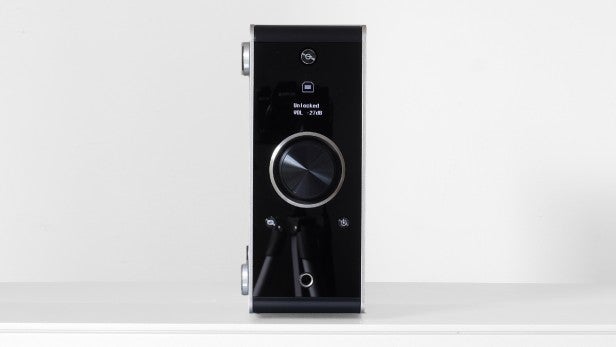
Denon PMA-50 – Features
Lifestyle stereo amps such as this are diminishing, stuck between surround systems and the one-box wireless sets that are so popular these days. However, if you’re happy with stereo presentation, the Denon PMA-50 offers plenty.
On the rear you’ll find phono, USB, coax and two optical inputs. This provides scope to plug in a disc player, a TV, computer and a couple of other sources if you need to.
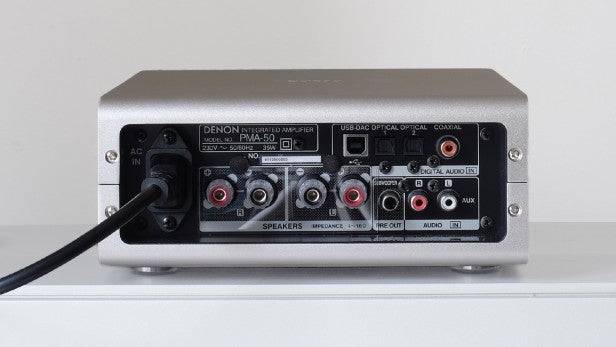
The Denon PMA-50 also has Bluetooth to let you connect wirelessly with your phone, and aptX to ensure the quality of the stream isn’t too dismal. There’s an NFC point on the left side of the box to speed up pairing, too. Just place an NFC-supporting phone over this point and they’ll attempt to connect.
In our experience Bluetooth reliability was great, although unlike a Wi-Fi speaker it relies on a direct connection with your phone, and hence in reality the range isn’t good enough to work across floors.
Denon makes a dedicated network player box – the DRA-100 – to match the Denon PMA-50, but it costs £699.
Using the USB input, the Denon PMA-50 can still take very high-quality signals – up to 24-bits/192-kHz PCM and 2.8MHz/5.6MHz DSD. The quality is these signals is arguably a little lost on the speaker types likely to be paired with this system, but it’s a sign the box uses a good DAC.
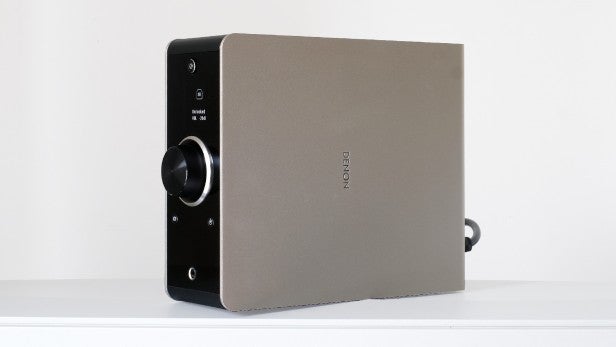
Denon PMA-50 – Sound Quality and Speaker Suitability
The most likely outcome for a Denon PMA-50 is that you’ll buy the box and then invest in a pair of bookshelf speakers, too – perhaps not from Denon. Without any extra components it’s like a modern mini-system for those who have said goodbye to physical media.
Its amplifier is solid state and rated at 50W for 4-ohm speakers. It isn’t a hugely powerful system, so you may want to check if this will be sufficient for pairing the amp with lounge-dominating floorstanders.
I’ve tried the amp with three sets of speakers: two small ones from Klipsch and Quadral; and a pair of large, hybrid electrostatic floorstanders. The Denon PMA-50 is practically and visually very well suited to hi-fi bookshelf speakers of all kinds, or even a pair of home-cinema satellites if you want something smaller.
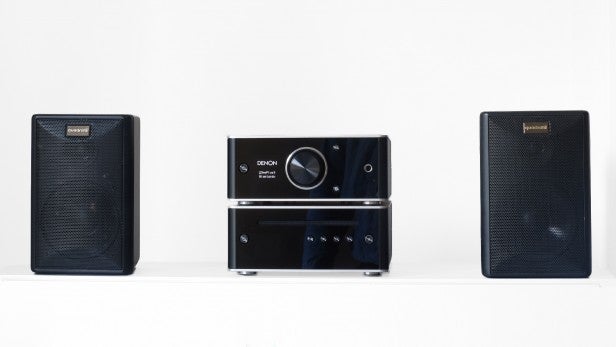
Of course, this will often leave you with quite a blank space at the lower end of the frequency register. Recently, I’ve been reviewing a lot of wireless speakers which use aggressive porting techniques and bass radiators, for example, to fill this gap. Smaller hi-fi speakers don’t tend to obsess about this to such an extent.
With the two smaller speakers I tried, this was quite obvious (note, this is the speakers’ fault, not that of the amplifier).
The Denon PMA-50’s solution is a subwoofer pre-out, letting you attach a powered subwoofer to fill out the bass registers and potentially make your setup sound far more powerful than a pair of floorstanders.
Contrary to what you may think at this point, the Denon PMA-50 is able to drive a pair of floorstanders. Unless the speakers are very hard to drive, you shouldn’t have to crank up the volume to a ridiculous level to fill a room. However, I did find that it left the larger speakers sounding a little less open, and the bass less tight than it normally sounds.
If you’re replacing an amp to power a large set of floorstanders, we’d recommend looking for something a little more powerful.
With the smaller sets, the Denon PMA-50 sounds perfectly good. Its tone is fairly neutral, letting the warm Quadrals and precise-sounding Klipsch speakers deliver their own style without obvious colouration.
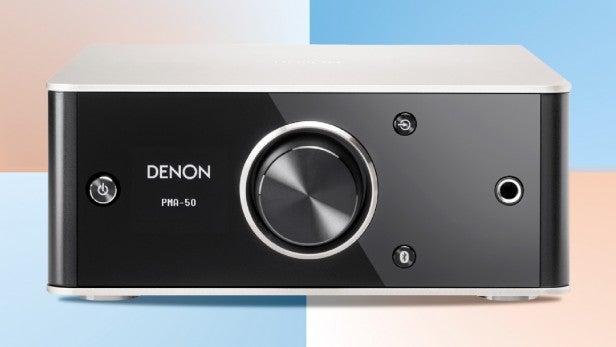
Should you buy the Denon PMA-50?
The Denon PMA-50 is the kind of amplifier that we’re glad exists, even though the little island on which it lives is eroding as people migrate from wanting a nice hi-fi to something more like a Sonos setup. If music is more than incidental to you, though, this is a good way to get room-filling stereo sound with modern style.
Its optimal setup is to be attached to two smaller (still quite large by today’s standards) bookshelf-style speakers, with an active subwoofer if you’re thinking of using this as a 2.1 system for your TV. Paired with the KEF Q100, for example, it will achieve higher fidelity – if less bassy – sound than a Sonos Play:5.
Verdict
A solid and stylish modern amplifier for those not ready to consign separate hi-fi speakers to history.


